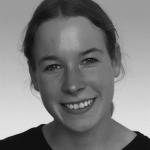Rare (Ciliary/Centrosomal) Disorders Unraveled: From Clinical Characterization to Genetic Analysis and Functional Characterization
*equal contribution
Departments of 1. Biochemistry, 2. Physiology and Pharmacology, 3. Medicine, 4. Pediatrics, 5. Pathology and Laboratory Medicine and 6. Biology from University of Western Ontario, London, Canada; 7. Department of Human Genetics, Radboudumc, Nijmegen, The Netherlands
We have established a powerful workflow to study the molecular mechanisms underlying rare hereditary disorders. Our team is multidisciplinary and consists of clinical and molecular geneticists, biologists with expertise in imaging and proteomics using patient-derived cells and other cell models, and scientists trained to model disease using Drosophila melanogaster. Our workflow starts in the clinic wherein predominantly consanguineous families with autosomal recessive disorders are selected. Selected families present with unique syndromes or disorders of interest such as ciliary and centrosomal disorders, intellectual disability and other disorders. DNA samples of affected individuals are then analyzed with SNP microarray analysis and whole-exome sequencing to identify the causative genetic defects. We established an in-house bioinformatics pipeline for variant calling and prioritization of rare variants in whole-exome sequencing data sets. Prioritized candidate variants are validated by Sanger sequencing and analyzed in the families to determine if they segregate with disease. Team meetings further facilitate selection of clinically relevant candidate genes. Upon identification of strong candidate disease genes, full length cDNAs of these genes are cloned into a variety of plasmids that allow imaging and proteomics in model cell lines, and phenotyping and rescue studies in Drosophila melanogaster. Patient-derived cells are also studied to determine mutational effects. In summary, with a multidisciplinary team and a robust work flow we set out to unravel the molecular causes and disrupted pathways that lead to rare hereditary disorders to ultimately improve genome diagnostics, genetic counseling and to pave the way for development of targeted therapies for patients with orphan disorders.
